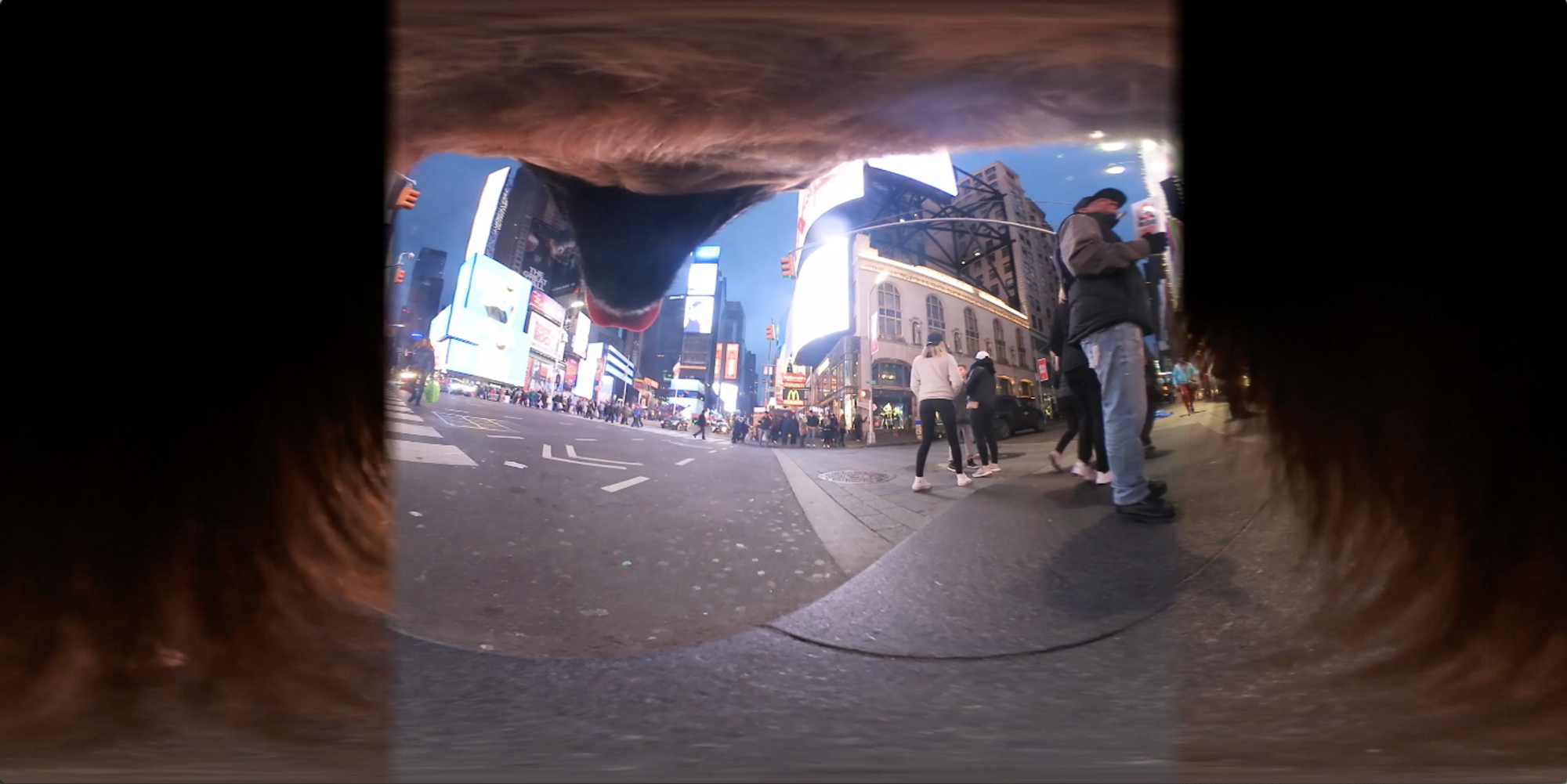
En El Monte
Alejandro Piñeiro Bello, Jose Capaz, and FABELOHUNG
En El Monte is an immersive environment created by Alejandro Piñeiro Bello, Jose Capaz, and FABELOHUNG (Roberto Fabelo Hung). Featuring a site-specific installation of metal flagpoles and ten virtual reality works filmed in New York, Havana, and Key West, the exhibition takes Havana’s Tribuna Antimperialista (Anti-Imperialist Tribune) as the jumping off point.
Tribuna Antimperialista was the site of a long-term propaganda battle in the late 1990s between the Cuban government and the United States Interests Section, Havana (USINT), which was situated in a building across the street from the square. In 2006, the United States installed a five-feet high ticker tape display across the top floor of the building which broadcast messages and quotes from Martin Luther King Jr. and other cultural figures such as the comedian George Burns, who once remarked: “How sad that all the people who would know how to run this country are driving taxis or cutting hair.” The Cuban government responded by erecting the monument Monte de las Banderas, or Wall of Flags, out of one hundred fifty flags to commemorate “victims of US aggression” and to partially block the ticker. At Pioneer Works, En El Monte evokes this square with an installation of flagpoles, onto which virtual reality headsets are attached.
Among the video works, El año del caballo (The Year of the Horse) most directly references the square, as it was filmed within Monte de las Banderas. The artists superimpose exotic dancers onto the monumental flagpoles to foreground both the disparity between the sexes and the extreme measures taken by women to make ends meet during the ongoing United States embargo. The embargo’s negative impact on Cuba’s sugar industry—once a crucial component of the island’s economy—is represented within other works, wherein quintessentially colorful cakes are seen being thrown and sunken into the waters of the United States and Cuba, and playfully destroyed in a food fight.
Piñeiro Bello, Capaz, and FABELOHUNG also address the quest for freedom and escape, in works such as Street Dog and Raft (balseros view). The former follows three dogs on a commute from New York to Havana—as if following an emigrant’s path backwards; the latter, shot in the waters between Havana and Key West, features a raft fleeing illegally during the height of the Cuban Rafters Crisis in 1994. Through these works, the trio explores post-revolutionary Cuban life in the shadow of isolationism, propaganda campaigns, and economic hardship, as well as the artists’ personal paths working within the complex relationship between Cuba and its closest imperial neighbor, the United States.
This exhibition is supported, in part, with funds from New York State Council on the Arts.
This exhibition is made possible with support from the Rockefeller Brothers Fund.
